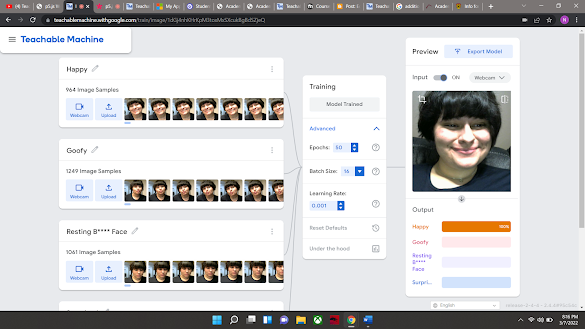Hello again and welcome back to Nikta's cinematic universe!
for the past couple of days I have been trying to figure out what exactly I want to make with unity since there is so many areas to explore and all of them are very cool but I think I will either focus on one of the two options:
3D game for PC: I have been messing around with terrains and textures for a while and still have not been able to actually like something I have made so far.
VR: is another option for me since my very nice boyfriend said he will let me borrow his VR headset, I have watched a few YouTube videos for this one and have not gotten the chance to try it yet. I also find this to be more "interactive" as well.
I would like to create something that contains "social commentary" since I like that stuff and I already have a few ideas in mind. But for now, I will have to gain as much skills as I possibly can in order to choose which route to take :)
Update Time!
plan A:My initial plan was to create a third person 3D game. I thought I was able to pull it off until I realized it would require a l o t o f c o d e. So, I asked myself: who do you think you are? before switching to plan B.
This might be short but took me hours to figure out 💔:
Plan B: switching to first person controller
Concept: social commentary/personal experience
I wanted to create a game where one starts off in a path filled with child like imagination, with a cartoonish setting.
With the use of Tinkercad, I placed a big maze in the middle of the game, as one starts playing and taking steps forward, one faces a maze on the way.
after the maze, one is faced with a dead end and the game finishes.
now one can cheat and go from the side of the maze or through it which was not planned but let's be real it adds to my concept more.
I have recently been interested in creating works that suggest our problems and struggles in the "real" world. I found this to be a great opportunity to demonstrate how I have recently been feeling about life, which has been an observation of the world around me. We are care free as children and suddenly grow up and get involved with life and its problems. Adulthood comes out of nowhere and suddenly we are stuck in a routine, (random example): to study in order to get a job, to get a job so we can afford a family, to pay the mortgage so the family can have a house to live in and so on. Suddenly we are responsible and in order to make it out we have to make the right decisions. and once we figure it out, and get out of all the chaos, that's when we are old. Everything will pause for a while and we will get to enjoy the world once again ( for a bit)
yes I know this is some dark stuff and I do not mean to ruin anybody's day, I have just been really thinking about these stuff recently 😖
Also, some people get to go through the easier path of life, Kim Kardashian for example definitely takes the corner path or goes through the maze like a ghost or something
so yes! here is some pictures outside of game mode:
- To save my work constantly (I lost progress 3 times until I learned this lesson)
- How to use Mixamo
- How to animate Mixamo characters in Unity
- How to do first person controller
- How to adjust the view
- How to change skybox
- How to add audio



















